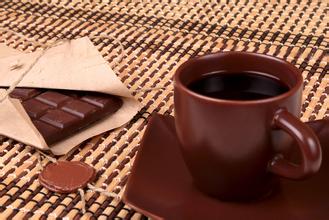What is the quality of Panamanian highland coffee beans? boutique coffee beans
The coffee grown in the highland is absolutely high quality, but the plantation coffee is not yet on the market.
Panama coffee is smooth, light and sour, and its high-quality coffee beans are pure and distinctive. The first batch of coffee exported each year is shipped in November, and almost all high-quality coffee beans are shipped to France and Finland.
The finest coffee is grown in the north of the country, near Costa Rica and the Pacific Ocean. The Boquet district of Chiriqui province is famous for its coffee, while other regions include David, Remacimeinto, Bugaba and Tole.
Caf é Volcan Coffee recognized by critics
Baru) has a good momentum, and the coffee is of excellent quality, with an output of 2000 bags in 1994, accounting for 1% of the country's total output.
fourteen. Puerto Rico
In 1736, coffee trees were introduced to Puerto Rico from Martinique (Puertp).
Rico). Most of the early coffee was grown by immigrants from Corsica. By 1896, Puerto Rico ranked sixth in coffee exports in the world, with most coffee shipped to France, Italy,
Spain and Cuba. Coffee farms flourished in the 19th century, but the rise of sugarcane and drug farming as well as the impact of hurricanes and wars made the coffee industry lag behind and is now recovering.
Puerto Rico has a low-wage system, with a per capita hourly wage of $4.20 in 1991. Still, manual workers earn more than workers in many other coffee-producing countries, as long as Hawaii and Tooth Buy
Plus is equal to it. Another problem facing the Puerto Rican coffee industry is that Puerto Ricans have better employment prospects because of their relatively high cultural quality in the Caribbean. Yaocote chooses coffee only in the southwest of the island.
Planted on three farms, it has a strong fragrance and a long aftertaste. This kind of coffee is very expensive and its flavor is comparable to that of any other coffee variety in the world. In the Yauco area, the coffee belongs to the local plantation
The Lord owns and operates. The mountain climate here is mild, the plants have a long mature period (from October to February), and the soil is of high quality clay. Some old varieties of Arabica coffee beans are grown here
Although the yield is lower than other varieties, it is generally of high quality. People here have been adopting an ecological and intensive planting method, using only some low-toxic fertilizers and chemicals, and adopting mixed crop planting measures.
And make the soil more fertile. When it comes time to pick coffee beans, people walk back and forth between coffee trees, picking only fully ripe coffee beans, and then wash them in a roller device for 48 hours.
Today, Puerto Rican gourmet coffee has been exported to the United States, France and Japan. Coffee in this country is generally carefully cultivated, with pure taste, aroma and heavy granules, among which the best is among the world's famous brands. The best coffee is Yocott's choice.
(Yauco Selecto), "Selecto" means "to choose". Big Larez Yaoke Coffee (Grand Lares
Yauco) is produced in the southwest of the island, while Larez coffee is produced in the south-central part of the island.
Yaocote's choice of coffee, which is grown only on three farms in the southwest of the island, is fragrant and has a long aftertaste. This kind of coffee is very expensive and its flavor is comparable to that of any other coffee variety in the world. In Yaoke
(Yauco) region, the coffee is owned and operated by the local plantation owner. The mountain climate here is mild, the plants have a long mature period (from October to February), and the soil is of high quality clay. Plant some here.
Although the yield of the old variety of Arabica coffee beans is lower than that of other varieties, it is generally of high quality. People here have always adopted an ecological and intensive planting method, using only some low-toxic fertilizers and chemicals.
Take mixed crop planting measures to make the soil more fertile. When it's time to pick coffee beans, people walk back and forth between coffee trees, picking only fully ripe coffee beans, and then washing them in a roller device for 48 hours.

Important Notice :
前街咖啡 FrontStreet Coffee has moved to new addredd:
FrontStreet Coffee Address: 315,Donghua East Road,GuangZhou
Tel:020 38364473
- Prev

Best Coffee Bean Jamaica Blue Mountain Coffee
is Jamaica blue mountain coffee that b large coffee in the world? Almost everyone who has heard of Jamaica Blue Mountain Coffee knows it is the most expensive coffee in the world, but not everyone knows why. Like Rolls-Royce cars and Stradivarius violins, when something gets
- Next

Coffee plantation at the highest altitude Ecuador coffee plantation
Probably the highest Arabica coffee grower in the world. The Arabian Coffee Tree was first introduced to Ecuador (Ecuador) in 1952 and its coffee is of good quality, especially the coffee harvested in early June. Ecuadorian coffee beans can be divided into two varieties: Galapagos and Gigante, both of which have the characteristics of large granules and heavy weight. Ecuadorian coffee can be made according to quality.
Related
- Does Rose Summer choose Blue, Green or Red? Detailed explanation of Rose Summer Coffee plots and Classification in Panamanian Jade Manor
- What is the difference between the origin, producing area, processing plant, cooperative and manor of coffee beans?
- How fine does the espresso powder fit? how to grind the espresso?
- Sca coffee roasting degree color card coffee roasting degree 8 roasting color values what do you mean?
- The practice of lattes: how to make lattes at home
- Introduction to Indonesian Fine Coffee beans-- Java Coffee producing area of Indonesian Arabica Coffee
- How much will the flavor of light and medium roasted rose summer be expressed? What baking level is rose summer suitable for?
- Introduction to the characteristics of washing, sun-drying or wet-planing coffee commonly used in Mantenin, Indonesia
- Price characteristics of Arabica Coffee Bean Starbucks introduction to Manning Coffee Bean Taste producing area Variety Manor
- What is the authentic Yega flavor? What are the flavor characteristics of the really excellent Yejasuffi coffee beans?

